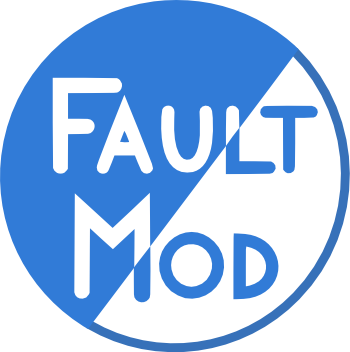 FaultMod is a SKUA-GOCAD plugin for modeling faults, fault networks and related uncertainties.
FaultMod is a SKUA-GOCAD plugin for modeling faults, fault networks and related uncertainties.
Building geological models is always an underconstrained process. A large part of the uncertainty is carried by faults because faults zone are poorly imaged in seismic. Furthermore faults dramatically impacts fluid flows and building models cohrent with geological concepts and knowledge is a key to increase models quality when few data are available. FaultMod offers several tools to integrate geological concepts in structural modeling workflows.
Stochastic fault network simulation from incomplete data
FaultMod contains algorithms to simulate stochastically fault and fracture networks given structural data (distributions for dimensions and orientation) and conditioning data (borehole intercepts, faults sticks or incomplete surfaces). Faults are modelled as implicit surfaces using StructuralLab in order to fit to the input faults sticks. The initial algorithm is described here : Stochastic simulations of fault networks in 3D structural modeling.
In 2017-2021, we have revisited the fault association problem using random graphs, see Structural interpretation of sparse fault data using graph theory and geological rules Fault data interpretation, and proposed an new graph-based simulation algorithm (Multi-scenario interpretations from sparse fault evidence using graph theory and geological rules).
Stochastic fault downscaling
A fault is often modeled as one surface, whereas experiments and observations suggest that faults structures are generated by growth and coalescence of several fault segments. The linkage of fault segments during fault growth generates peculiar structures, which can have a strong impact on the connectivity and geometry of rock units on both sides of the fault, and on the intrisic hydrodynamic and mechanical properties of the fault zone. To address this challenge and the associated uncertainties, FaultMod integrates an algorithm to downscale a fault surface into a set of fault segments (see: Sampling the uncertainty associated with segmented normal fault interpretation using a stochastic downscaling method and Impact of the en echelon fault connectivity on reservoir flow simulations).
Integrating faults in subsurface inverse problems
Fault network uncertainty has a significant impact on the physical behavior of the earth, but fault geometry and fault network connectivity are very seldom considered in subsurface inverse problems. FaultMod can be used to integrate the sampling algorithm in stochastic Bayesian inverse problems. This allows the probability of existence of a given fault to be considered, and more generally the fault network topology to change during the resolution of the inverse problem. To learn more, see Method for Stochastic Inverse Modeling of Fault Geometry and Connectivity Using Flow Data and Assessing the Impact of Fault Connectivity Uncertainty in Reservoir Studies using Explicit Discretization.
Fault displacement field
Faults are often represented by planar surfaces but they can also be described as a discontinuous displacement field within a volume. The Vectorial Field Shape Deformation algorithm allows to model the displacement field associated with a fault. It offers a tool to study fault kinematics, fault displacement profiles and to restore faulted structure. To learn more, see A parametric method to model 3D displacements around faults with volumetric vector fields and A parametric fault displacement model to introduce kinematic control into modeling faults from sparse data.

(Displacement modelled using VFSD in FaultMod)
Current research associated to this project aims at integrating more advanced structural concepts into the fault uncertainty assessment, and to adapt the method to uncertainty management during seismic interpretation.
Download
The FaultMod Training includes the documentation and Windows executable (Sponsors only)

